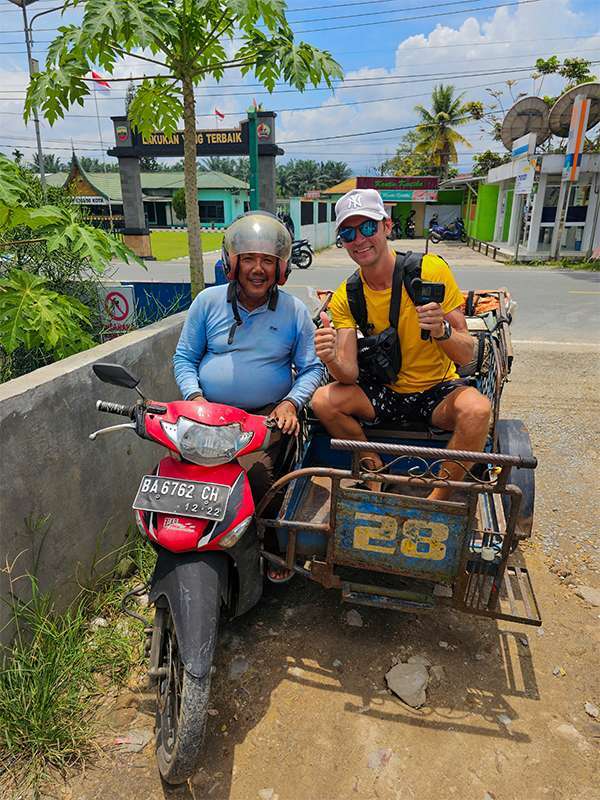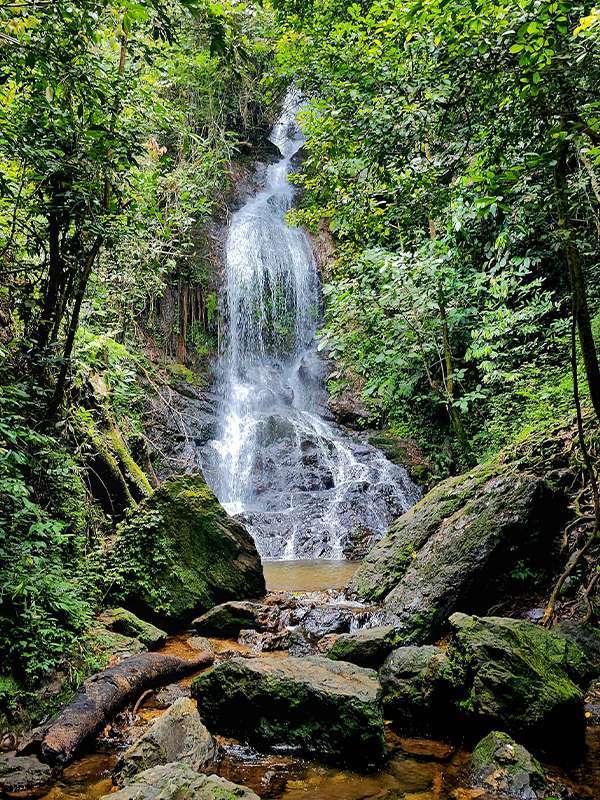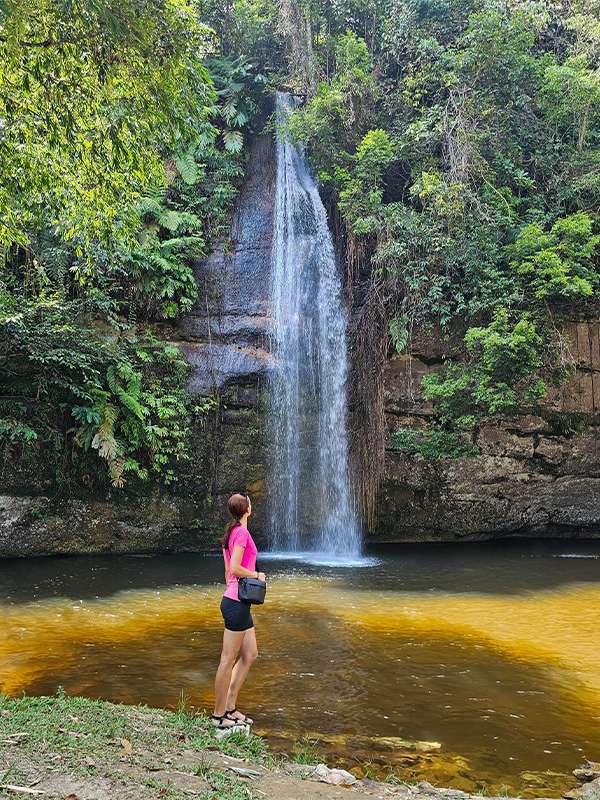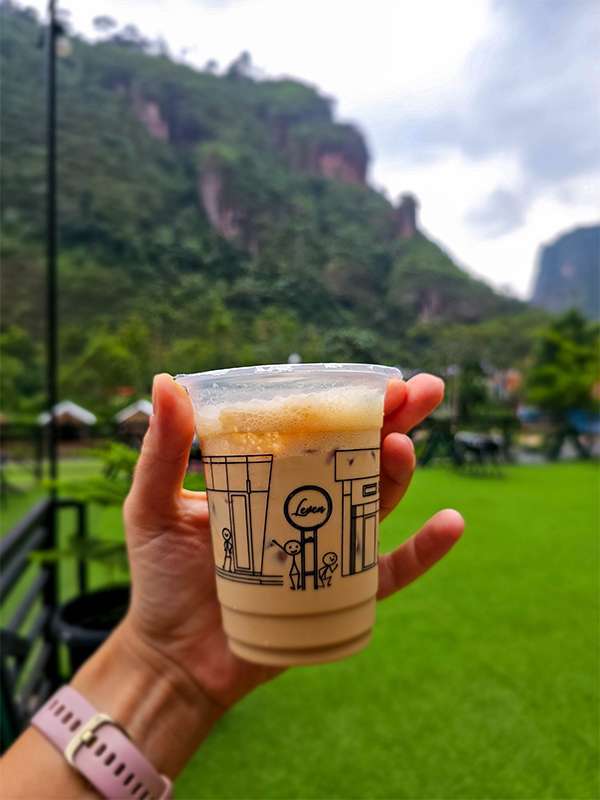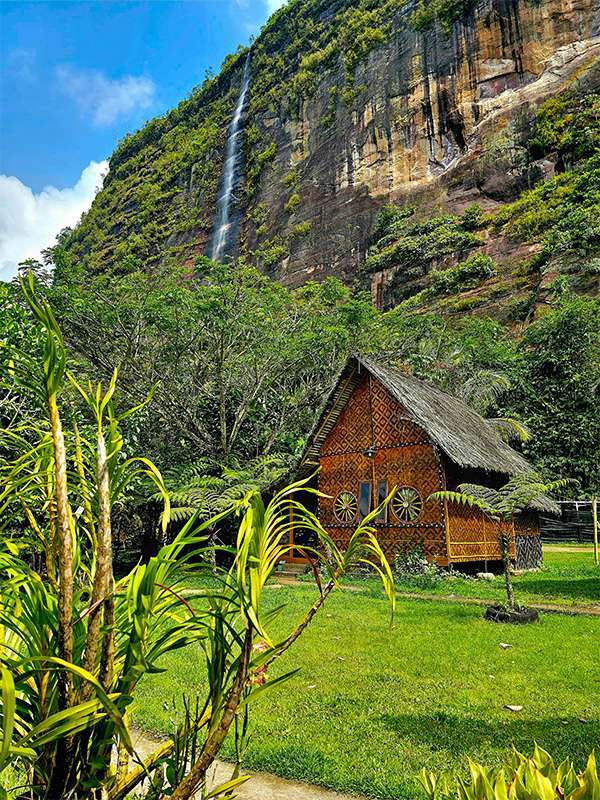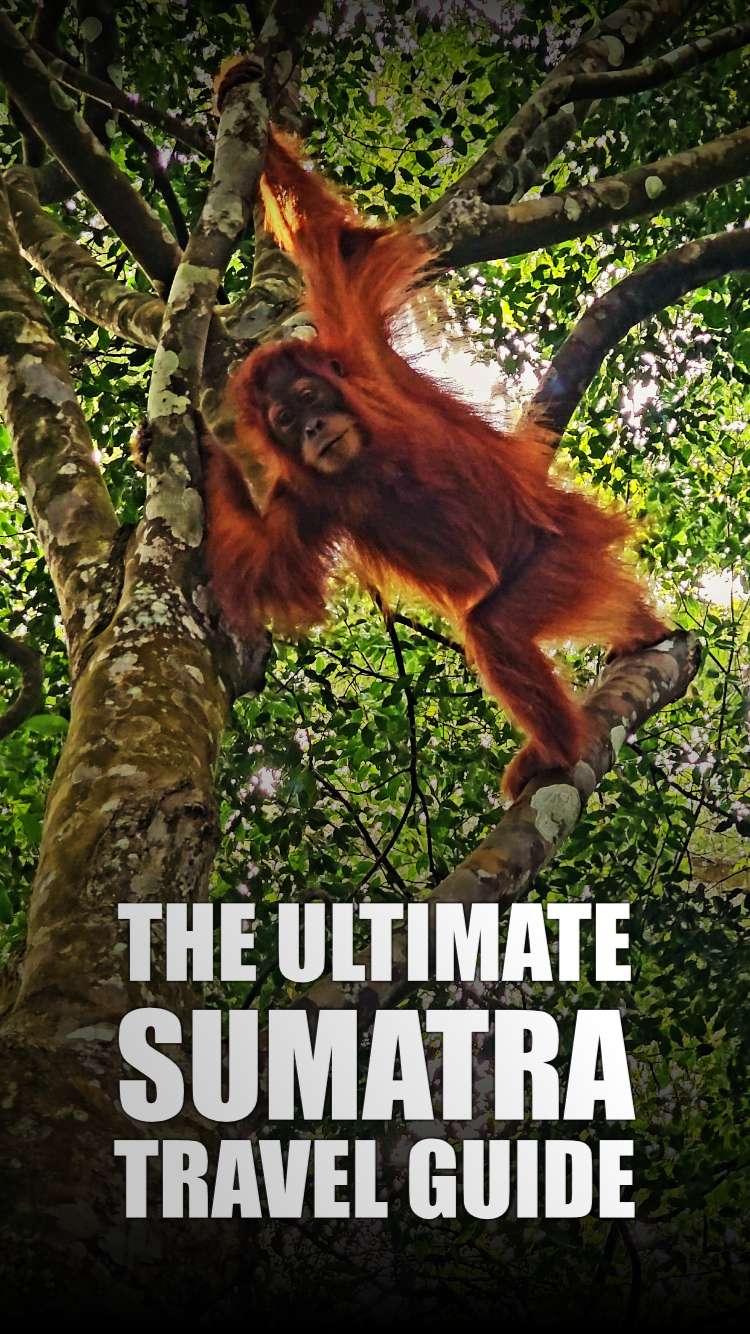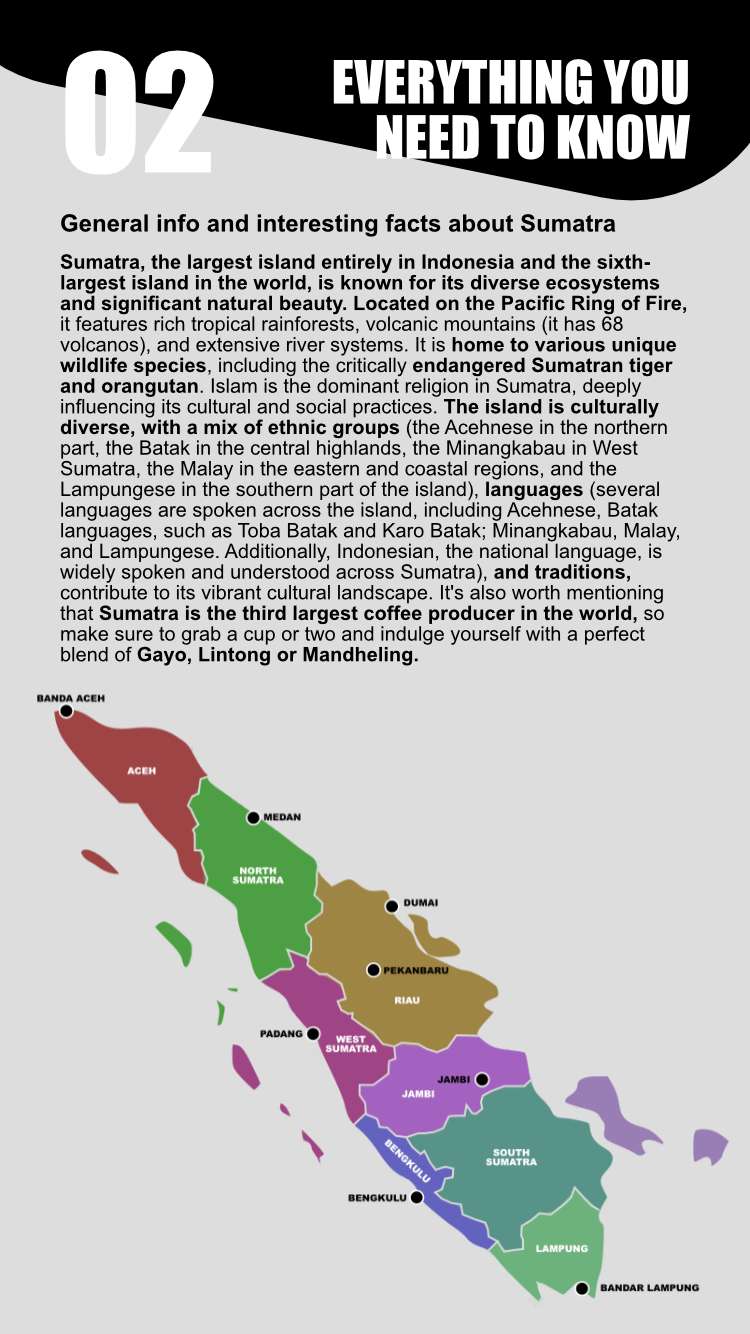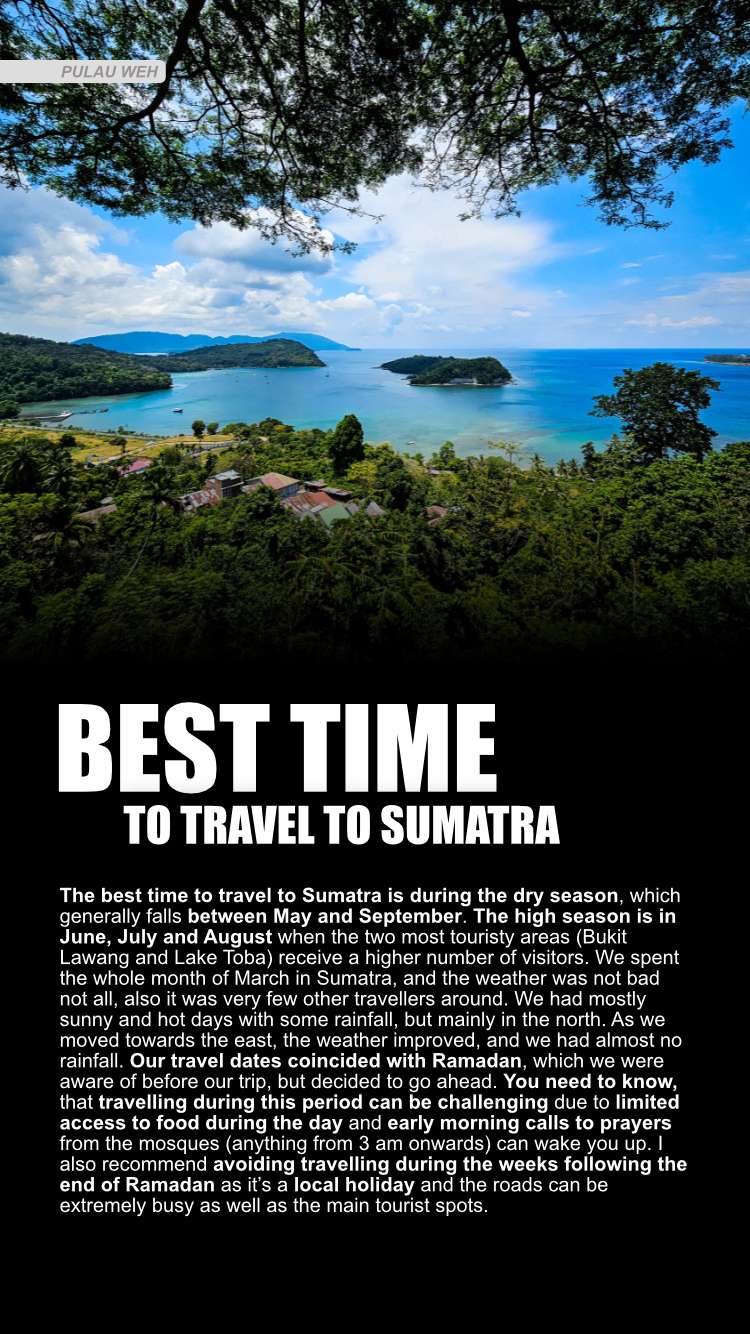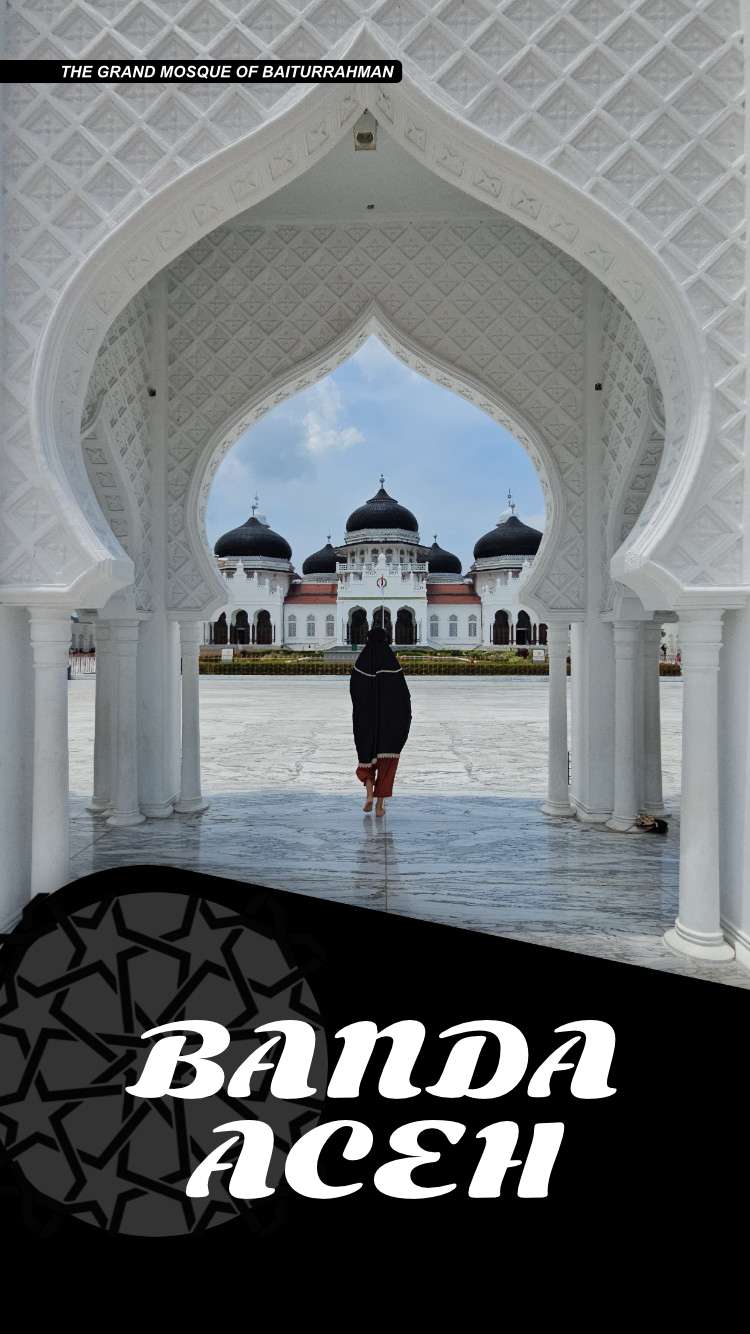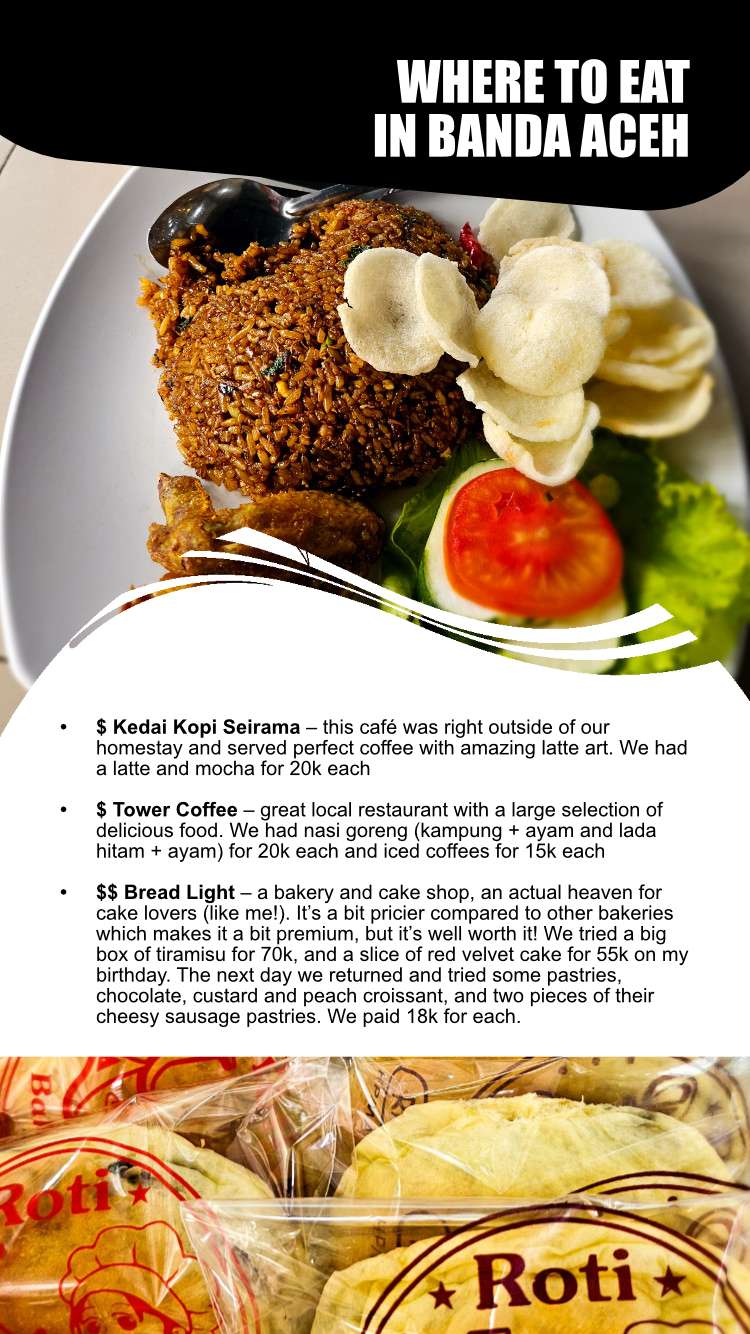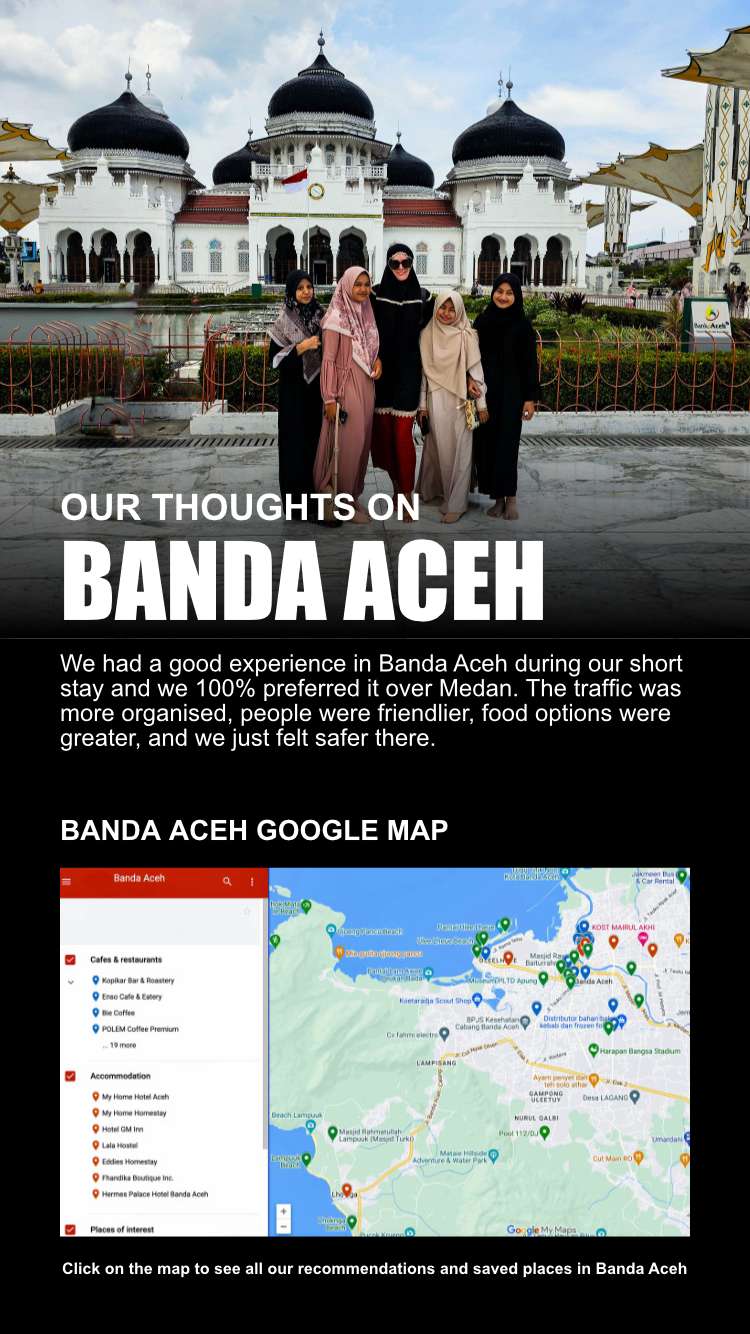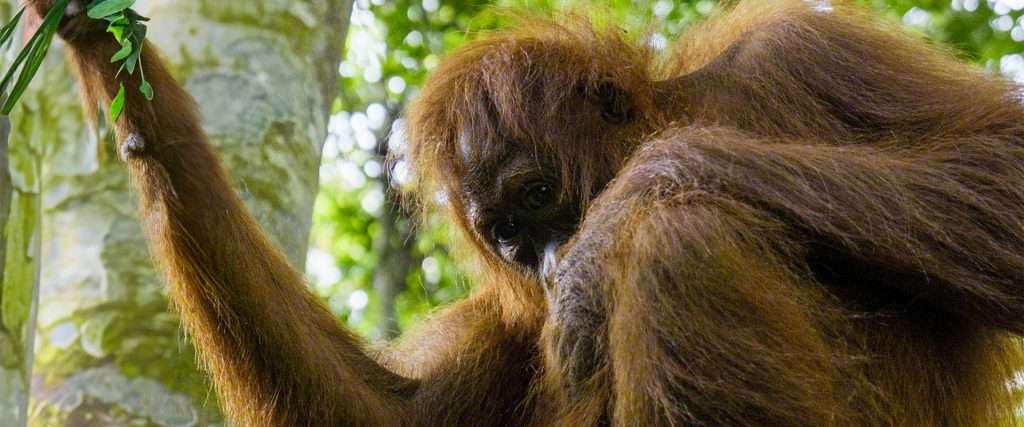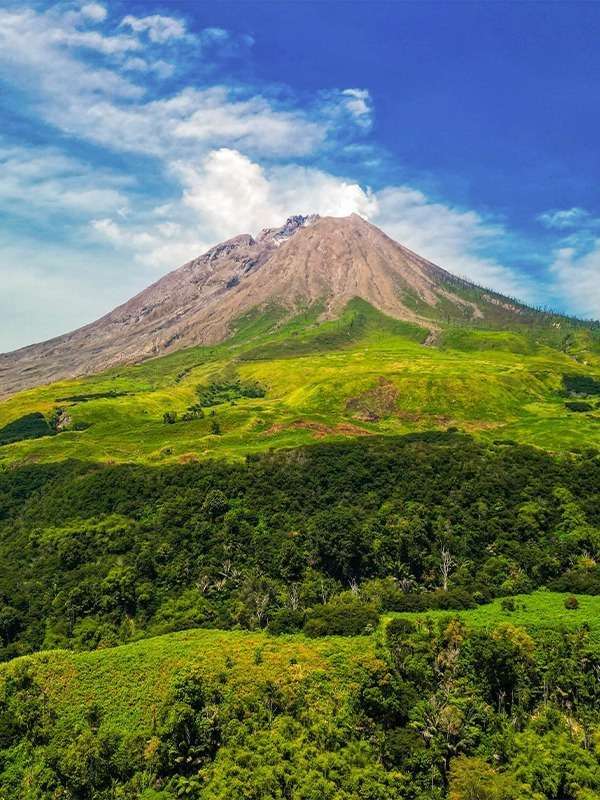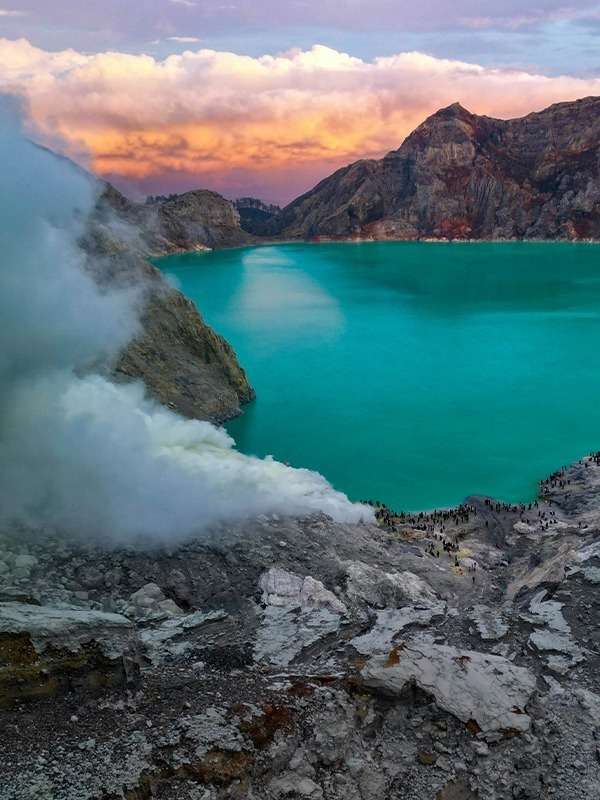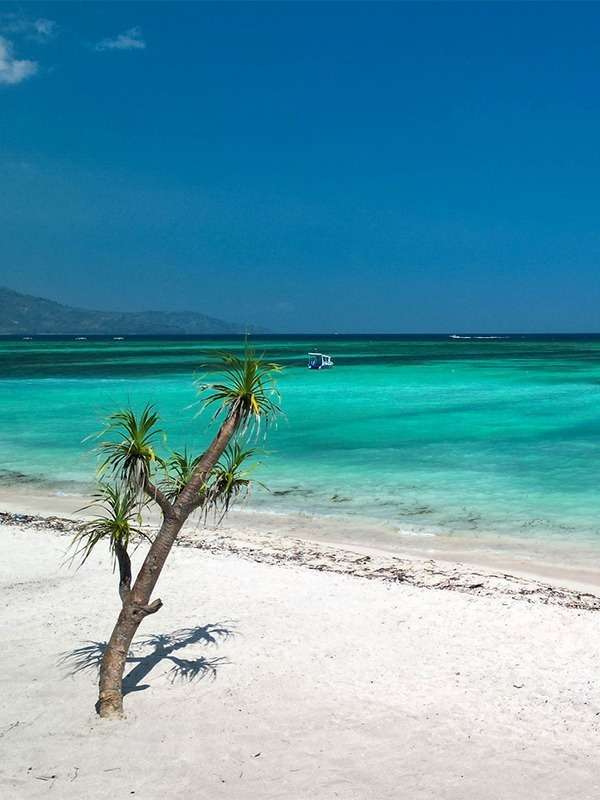Imagine waking up in a cosy wooden bungalow, rice paddies swaying gently outside your window, and a towering cliff with a 50-meter waterfall just steps away. That’s the kind of magic Harau Valley (Lembah Harau) offers; a peaceful escape tucked in the heart of West Sumatra, Indonesia.
Often called the “Yosemite of Indonesia,” Harau Valley is a hidden gem that blends dramatic landscapes with rich cultural traditions. With its lush greenery, cascading waterfalls, and towering granite cliffs, it’s a dream for nature lovers.
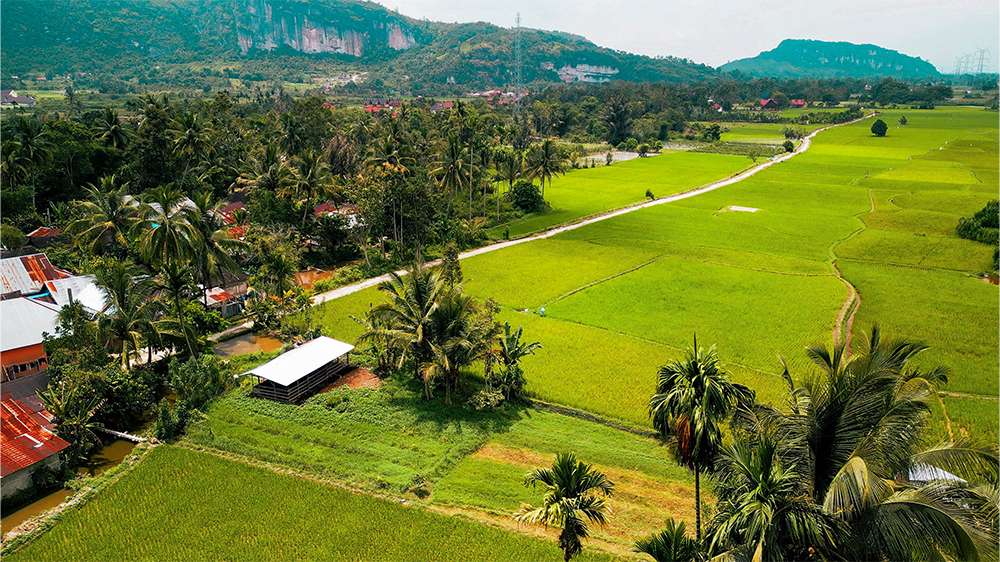
The Story of Harau Valley
What makes Harau truly special isn’t just the scenery; it’s the legends and the people. According to local folklore, the valley’s waterfalls were formed from the tears of a heartbroken princess. That poetic story lives on in the hearts of the Minangkabau community, who still call this valley home.
Known for their matrilineal culture and warm hospitality, the locals live simply, cultivating rice fields and preserving traditions passed down for generations. During our stay, we embraced the slower pace: cycling past golden paddies, scootering to scenic viewpoints, and watching the mist rise over the cliffs each morning from our wooden chalet at Abdi Homestay.
If you’re dreaming of an off-the-beaten-path peaceful escape near Bukittinggi, Harau Valley offers something truly special.
In this guide, you’ll find everything you need to plan your trip: how to get there, the best places to stay, top things to do, and local experiences you won’t want to miss.
How to Get to and around Harau Valley
Getting to Harau Valley
Flight to Padang (Minangkabau International Airport)
If you’re coming from Medan, the quickest way to reach Harau Valley, Sumatra is by air. Super Air Jet runs two daily direct flights from Medan to Padang, taking around 1 hour and 15 minutes. While flights can be a bit pricey, they save you a full day of travel compared to an overnight bus. You can easily find the best flight deals on Skyscanner.
Once you land in Padang, you have three main ways to reach Harau Valley:
- Private car or taxi: This is the most comfortable option, especially if you’re carrying big bags or just want a smooth ride. The drive takes about 3–4 hours and costs around IDR 600k–800k. You can pre-arrange a car through your homestay or try booking a Grab or Gojek from the airport
- Minivan: A solid middle-ground choice. It’s quicker and more comfortable than the local bus but still affordable. Expect to pay around IDR 150k–200k for the 4-hour trip. These can be booked at the airport or through your accommodation
- Local bus: If you’re on a budget and don’t mind a bit of an adventure, this option costs just IDR 100k–150k, but the journey can take 5+ hours with multiple transfers. You’ll change buses in Bukittinggi, then head toward Payakumbuh, and finally hop on a small opelet (local tuk-tuk) to reach the valley. Not ideal if you’re carrying a lot
Our Experience: Car Transfer from Bukittinggi
Since we were already in Bukittinggi, we booked a Gojek car for a hassle-free, door-to-door ride to Harau Valley. With luggages, backpacks and camera gear in tow, we didn’t want the stress of switching vehicles. The ride took just over an hour and cost us IDR 220k. Honestly, the convenience was worth every rupiah and the scenery along the way was breathtaking.
Budget Option: Local Bus from Bukittinggi
If you’re travelling light and want to save money, this route is doable, just a bit more of a puzzle. Here’s how we mapped it out:
- Start at Aur Kuning Bus Terminal, about 10 minutes from Bukittinggi city center
- Ask for the minibus to Harau Valley (most drivers will understand). Tell them your destination so they can drop you off at the right spot
- You’ll get off in Sarilamak village, and from there, hop on an opelet to your accommodation in the valley
Cost breakdown for two people:
- Gojek to terminal: IDR 19k
- Local minibus: IDR 15k/person
- Opelet: IDR 20k
So in total, around IDR 30k per person; by far the cheapest way to go!
Getting around Harau Valley
Scooter Rental in Harau Valley
Renting a scooter is hands down the best way to explore Harau Valley freely and at your own pace. Most homestays and guesthouses offer rentals, usually between IDR 60k to 100k per day, plus a bit more for fuel.
We paid IDR 80k for a stylish Scoopy, and it was worth every rupiah. There’s something magical about cruising through the valley: wind in your hair, rice fields on both sides, and those towering cliffs in the distance. For us, it was one of the most unforgettable parts of our Harau Valley trip, in West Sumatra.
Opelet (Local Transport)
If you’re not comfortable riding a scooter, don’t worry! The opelet, a small motorised rickshaw, is another great option. They’re widely used by locals and are super budget-friendly.
We found them perfect for short rides between villages or to nearby shops and eateries. Just flag one down and let the driver know where you’re headed. It’s an easy and authentic way to get around without needing to drive yourself.
Walking around Harau Valley
Harau Valley is perfect for walking. With scenic paths, peaceful rice fields, and traditional Minangkabau houses dotted across the valley, it’s a dream for slow travel lovers. You can go for a short stroll, a longer hike, or even try a bit of rock climbing.
We spent hours wandering through the valley stopping for photos, chatting with locals, and just soaking in the calm nature around us.
Good to know
The main roads in Harau Valley are in good shape, but the smaller side roads can be rough with potholes and steep climbs, especially near viewpoints. If you plan to rent a scooter, make sure you’re an experienced rider and have a valid driver’s license along with an international driving permit and travel insurance.
Best Things to Do in Harau Valley, West Sumatra
Harau Valley is packed with activities and sights to explore. From scenic walks and cultural encounters to stunning waterfalls and breathtaking viewpoints, there’s something for everyone. Here’s a list of must-do activities in Harau Valley to make your trip unforgettable.
Take a Stroll Through the Valley
One of the best ways to experience Harau Valley is on foot. We spent hours wandering the peaceful paths, passing by cosy guesthouses, local food stalls, and shops. The valley’s lush rice fields, towering cliffs, and traditional Minangkabau houses make every step a picture-perfect moment.
If you’re lucky, you might even spot some playful macaques or hear the call of gibbons in the nearby trees!
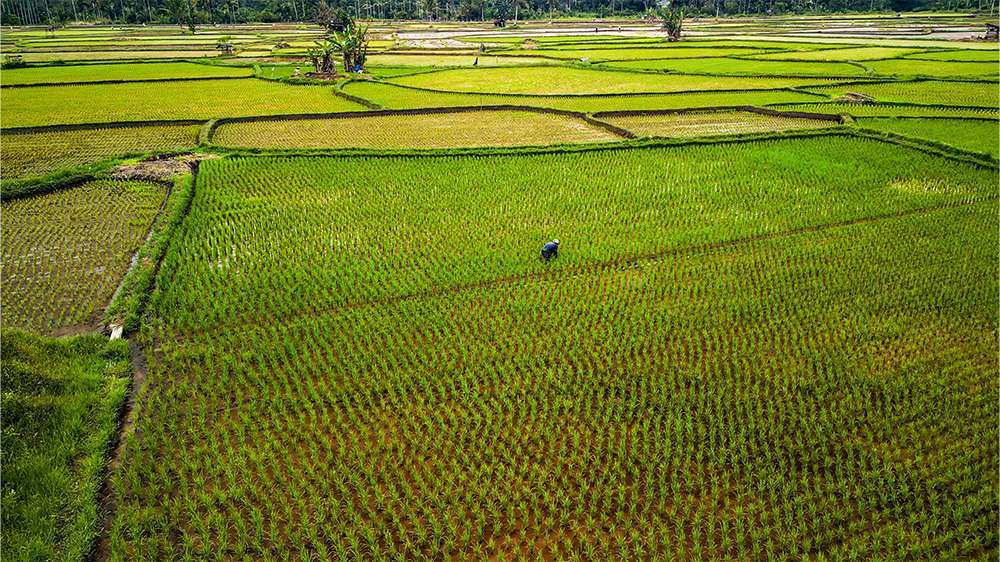
Explore the Waterfalls of Harau Valley
For waterfall lovers, Harau Valley is nothing short of a paradise. With cascading falls set against stunning landscapes, each waterfall offers a unique experience. From snapping photos to enjoying the tranquility, these falls are unmissable:
Harau Valley Waterfall (Air Terjun Lembah Harau)
This is the most famous waterfall in the valley, easily accessible from the main road. The waterfall plunges down a stunning sandstone cliff into a natural pool, where locals often gather for a refreshing swim. There are food stalls nearby where you can grab a snack or drink, making it a great spot to relax.
If you plan to swim, be mindful of local customs and dress modestly.
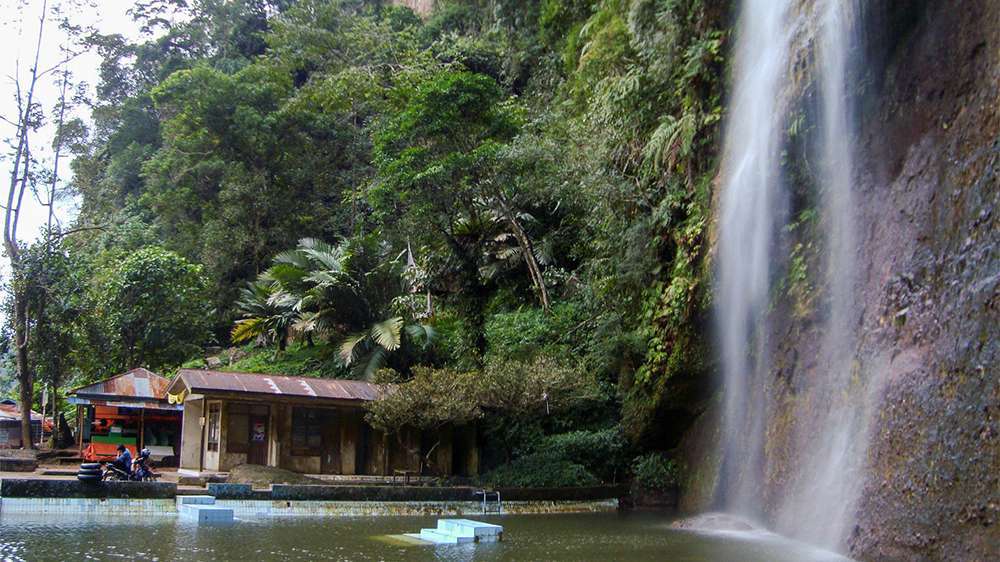
Sarasah Murai Waterfall (Air Terjun Sarasah Murai)
Sarasah Murai is a peaceful retreat located a little further from the main valley. The journey here takes you through picturesque rice fields and towering cliffs, making the trip just as beautiful as the destination.
The last stretch is a bumpy dirt road, so be prepared for a slightly bumpy ride. However, the serene beauty and tranquility of this waterfall make it more than worth the trip.
Sarasah Donat Waterfall (Air Terjun Donat)
Named for its unique doughnut-shaped rocks, Sarasah Donat is a fantastic spot for photos. It’s easily accessible by scooter or opelet, and the scenic ride there offers some amazing views.
Check out this helpful YouTube video made by locals to find your way to the more hidden waterfalls.
Sarasah Bunta Waterfall (Air Terjun Sarasah Bunta)
Sarasah Bunta is a serene and beautiful waterfall, perfect for those seeking peace and quiet. It’s just a short walk from the main area, surrounded by lush greenery and natural rock formations.
The gentle flow of the water makes it an ideal spot for relaxation and photography. If you’re looking to escape the crowds and enjoy a peaceful moment in nature, Sarasah Bunta is the perfect place to visit.
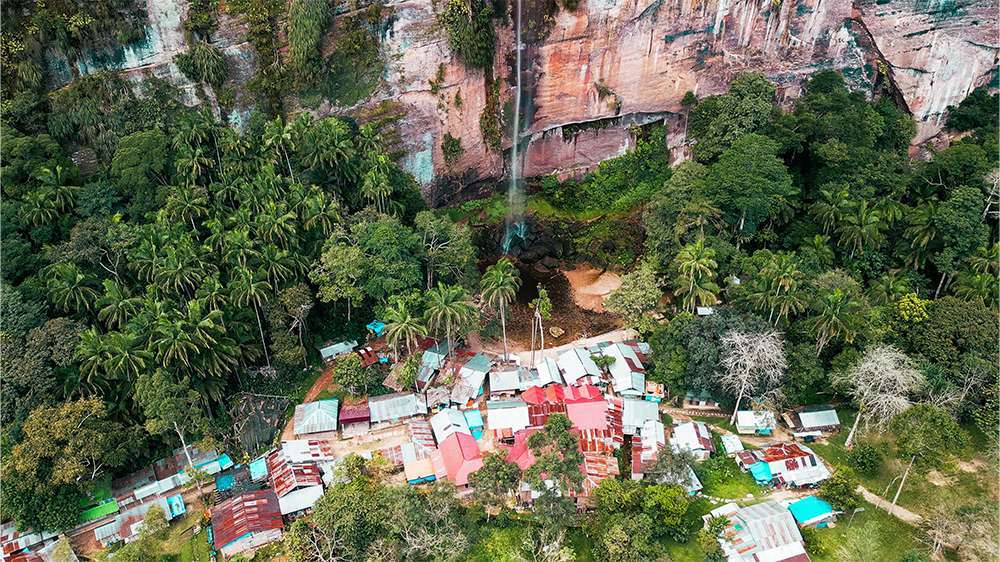
Rent a Scooter and Explore the Neighbourhood
Harau Valley is the perfect place to rent a scooter and explore the surrounding area. Here are a few must-see spots we discovered along the way:
Payakumbuh
A quick 30-minute ride from Harau Valley, Payakumbuh is the second-largest city in West Sumatra, full of culture and natural beauty. We loved wandering through the local markets, checking out cultural performances, and exploring the traditional Minangkabau houses. Don’t miss Ngalau Indah Cave, a beautiful limestone cave with impressive stalactites and stalagmites!
Panorama Kayu Kolek
For stunning views of the valley, Mt. Sago, Sikabu rice terraces, and the city, head to Panorama Kayu Kolek. The ride up took us about 45 minutes, but the final stretch was steep, and we had to stop for some extra fuel. Once we reached the top, the view was absolutely worth it; perfect for photos and videos, especially on a clear day!
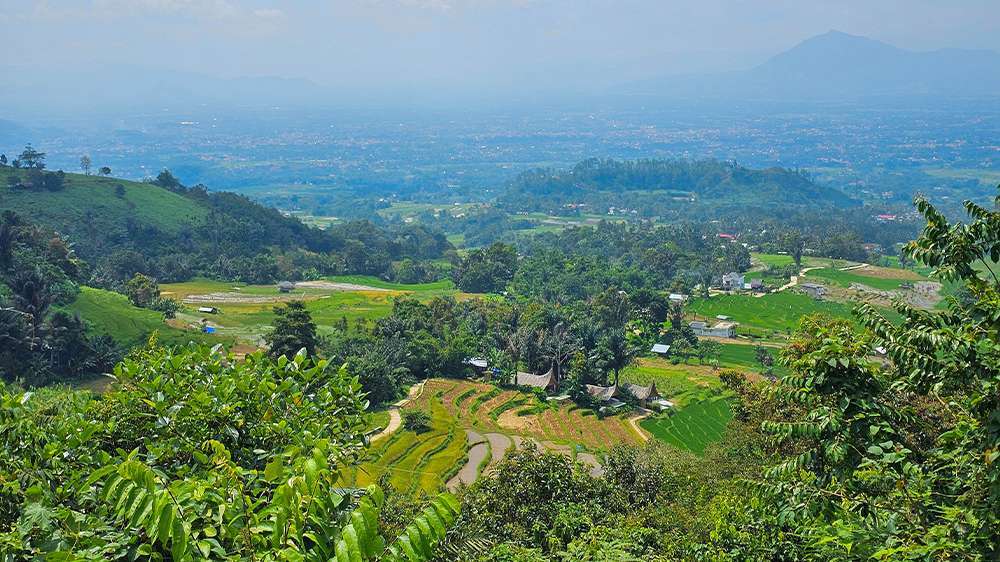
Sikabu Rice Terraces
On your way back from the viewpoint, make sure to stop at Sikabu Rice Terraces. The lush green fields here reminded us of Bali’s famous terraces and offer amazing views.
During our visit, the local cafes were closed due to Ramadan, but they’re usually open, where you can grab a snack or drink at Bumi Sikabu or La Terra Café while soaking in the peaceful scenery.

Kelok 9
Kelok 9, or “Nine Turns,” is a winding road with nine sharp bends, connecting West Sumatra and Riau. This engineering marvel offers incredible views and features striking bridges and viaducts. We had so much fun riding through it, and there are plenty of viewpoints where you can stop and take photos.
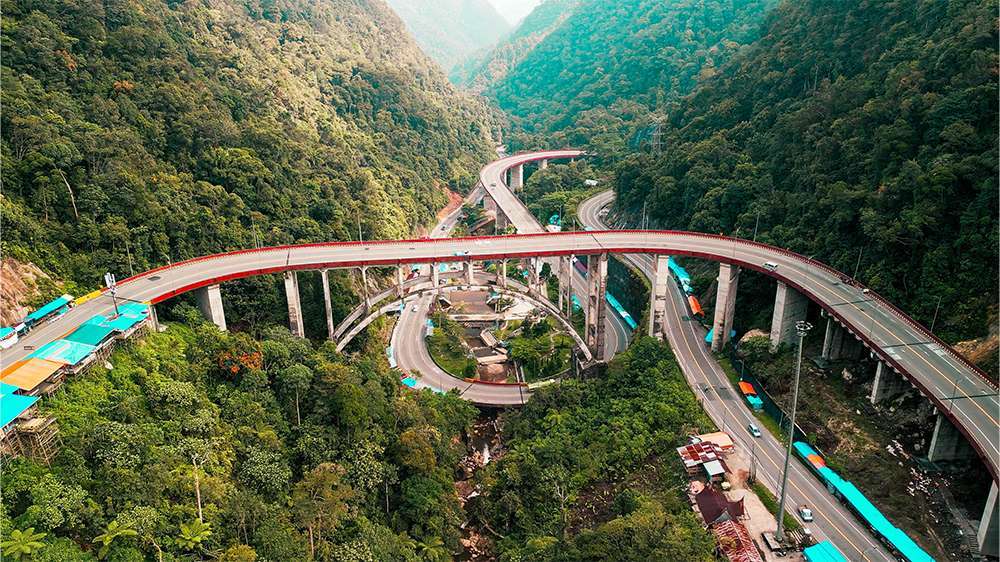
Panorama Harau
Just a 5-minute drive from the main road, Panorama Harau offers a jaw-dropping 180-degree view of the valley. The landscape here is stunning with lush greenery, dramatic cliffs, and endless beauty. It’s the perfect spot for photography, especially if you’re flying a drone. We stopped here for a moment, and it truly took our breath away.

Pasar Sarilamak (Sarilamak Market)
Only a 10-minute ride away, Sarilamak Market is the place to go for fresh fruits, veggies, and traditional snacks. It’s open on Tuesdays and Saturdays, so make sure to visit in the morning for the freshest produce.
Further Adventures and Hidden Gems in Harau Valley, Sumatra
If you’re looking to dive deeper into Harau Valley and explore more of the Minangkabau culture, check out these hidden gems and additional adventures that will make your visit even more memorable.
Where to Eat in Harau Valley
Exploring Harau Valley isn’t just about the views and waterfalls; it’s also about the food. One of the best ways to experience local food in Harau Valley is through the warm hospitality of homestays, cosy cafés, and small local eateries. You won’t find fancy restaurants here, but what you will find is hearty, home-cooked meals that truly hit the spot.
$ Abdi Homestay
Let’s start with the simplest and most rewarding option: eating at your homestay. We stayed at Abdi Homestay, and the food was a highlight of our stay. Dinner here felt like a home-cooked meal from a friend, cosy, filling, and made with care.
One evening, we had tempeh in a flavorful sauce, sautéed vegetables, hot tea susu (milk tea), and tender chicken, all served with rice and it only cost IDR 25k. Another night, we kept it simple with mie goreng and tea susu for just IDR 10k. Breakfast was included in our stay and featured banana pancakes, an omelette with toast, and a cup of coffee susu.
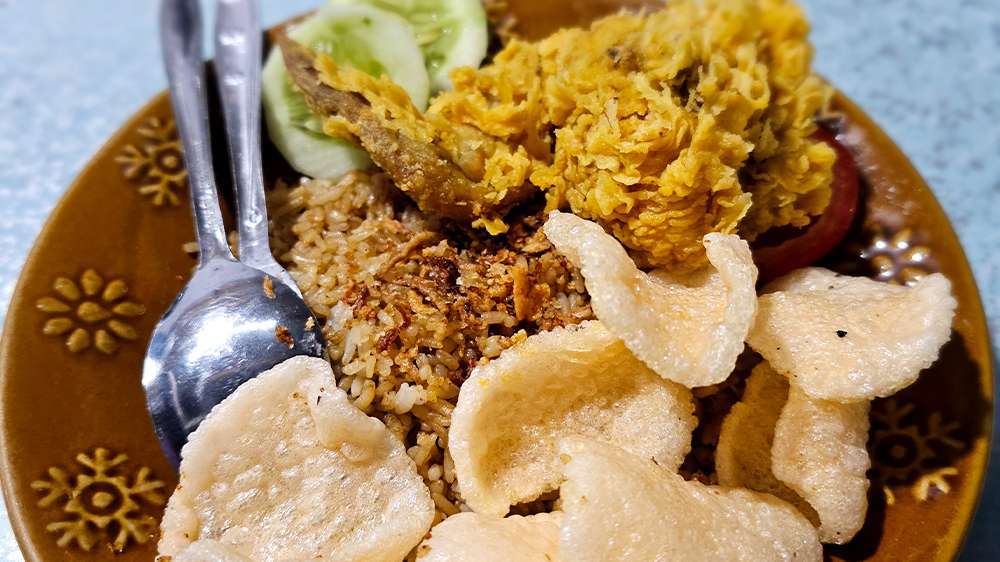
$ Bhumi Harau
We tried to visit Bhumi Harau on our first night, but it was closed. Probably due to Ramadan or because we arrived a bit late. Still, this place comes highly recommended for both the atmosphere and the price. If you’re planning to eat out, definitely check their opening hours in advance and give it a try.
$ Leven Coffee and Eatery
Leven Coffee quickly became our favourite hangout. On our first day, it was the only café open and we ended up coming back every single day. The food was delicious, the coffee was rich, and the prices were perfect for budget travellers.
During Ramadan, they offered an Iftar pack with nasi ayam pedas manis (sweet and spicy sticky chicken with rice) and lemon iced tea for just IDR 40k. Norman had the nasi katsu set for IDR 35k, and both came with free watermelon and filtered water, such a thoughtful touch!
And the coffee? Absolute heaven. I couldn’t resist their es kopi krim (IDR 23k): espresso mixed with milk, ice, vanilla ice cream, and a touch of creamer. Sweet, creamy, and perfect on a warm afternoon.
Where to Stay in Harau Valley, Sumatra
If you’re wondering where to stay in Harau Valley, the good news is finding a cosy place to rest your head is easy. Especially during the low season, you can often just show up and book something on the spot.
While you won’t find luxury hotels here, that’s part of the charm. Harau Valley is all about slow travel, nature, and genuine local experiences. Most accommodations are small family-run guesthouses or eco-friendly homestays with basic amenities like fans instead of air-conditioning. For a more upscale stay, consider spending a night or two in Bukittinggi, just an hour away.
Here are a few great places to stay in Lembah Harau:
$ Abdi Homestay ($13/night)
We absolutely loved our stay at Abdi Homestay, and it’s easy to see why it’s a traveler favourite. The wooden bungalows are tucked between lush rice fields and towering cliffs, with a 50-meter waterfall right outside your door, talk about a view!
Book via WhatsApp: +62(0)852-6378-1842 or message them on Instagram.
$ Orau Inn Homestay ($18/night)
If you’re looking for a family-friendly place to stay in Harau Valley, Orau Inn is a lovely option. It’s run by a welcoming local family and set against a scenic rock wall backdrop.
Each room has a small terrace overlooking nature, and the peaceful setting makes it perfect for couples or families. The hosts cook fresh, home-style meals, and breakfast is included. It’s a great pick for travellers who appreciate simple comforts and heartfelt hospitality.
$$ The Edge Harau Glamping ($30/night)
For a slightly more luxurious stay, The Edge Harau Glamping is worth checking out. This unique spot offers 17 stylish tents that blend the comforts of a hotel with the natural beauty of Harau Valley. Rates start from IDR 450k per night.
Bonus: their on-site Leven Coffee & Eatery is one of the best places to grab a meal or coffee in the valley.
To book, contact them on Instagram or WhatsApp: +62(0)812 2000 2301 / +62(0)812 2000 2302.
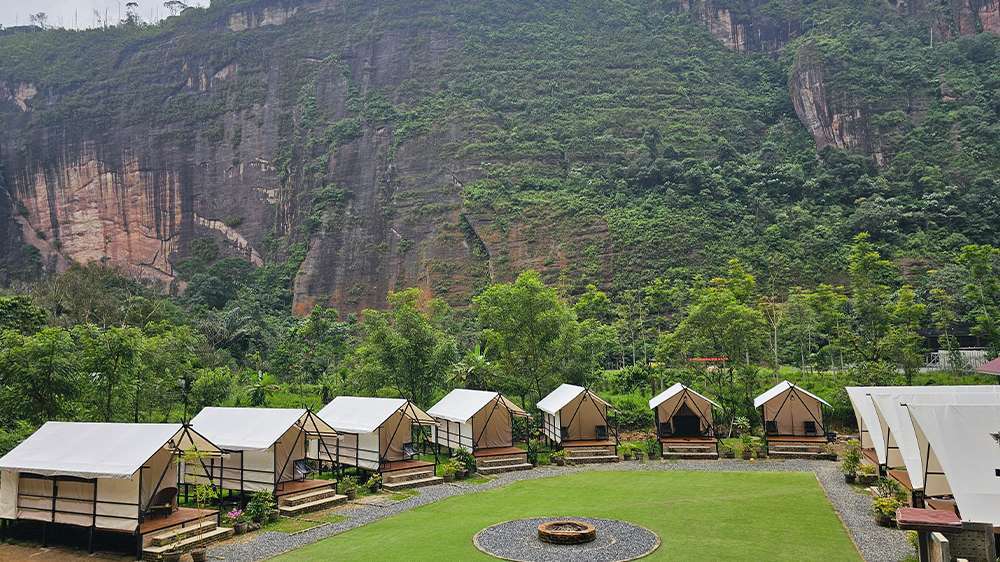
Practical & Budget Travel Tips for Harau Valley
Staying in Harau Valley is naturally budget-friendly: there are no luxury resorts here, but the real luxury lies in the dramatic cliffs, waterfalls, and peaceful rice fields. Here’s how to make the most of your trip:
- Best Time to Visit: May to September for dry days and clear skies. We went in March and still had great weather, with only a few light showers
- Getting Around: Rent a scooter or explore on foot. Roads can be bumpy, so take it slow and enjoy the ride
- Eat Local & Save: Homecooked meals at homestays are affordable and delicious, don’t miss them! Leven Coffee is also a top pick for budget eats and great coffee
- Where to Stay: Pick a guesthouse or homestay. We loved Abdi Homestay for its views and warm hospitality. It’s simple, comfy, and comes with a tasty breakfast
- What to Pack: Light clothes, rain gear if you’re visiting outside dry season, and comfy walking shoes. For more, check out our Packing Guide
- Cultural Tips: Dress modestly (especially during Ramadan), and be mindful at waterfalls where locals bathe. A few Bahasa Indonesia or Minangkabau phrases go a long way
- Stay Safe: Drink only bottled water and be careful with street food. Locals are friendly, but as a precaution, keep an eye on your belongings and avoid walking alone after dark
- For more help with planning, check out our Ultimate Travel Resources Guide for the tools we use to book and organise all our trips!
Final Thoughts on Harau Valley
Harau Valley in West Sumatra completely stole our hearts. With towering cliffs, waterfalls, and endless rice fields, it felt like stepping into a dream. The people were kind, the pace was slow, and every moment was peaceful. Sure, the roads were a bit bumpy, and things were simple, but that’s what made it feel real.
If you’re looking for an off-the-beaten-path destination in Indonesia, Harau Valley is a hidden gem that deserves a spot on your Sumatra itinerary.
If this Harau Valley travel guide inspired you, feel free to share it with your travel buddies or save it for later. Trust me, Harau Valley is one of those rare places that stays with you long after you leave.
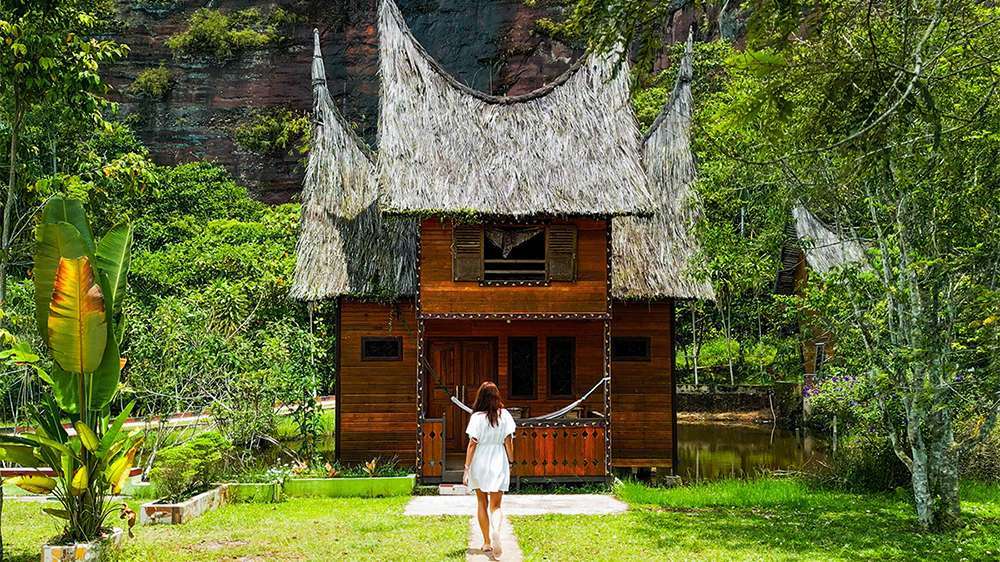
Harau Valley Travel Map
Get Inspired
In the heart of Indonesia, shrouded in the mists of time and the lush canopies of the tropical rainforest, there is a land of natural beauty, where ancient volcanoes stand as sentinels over verdant landscapes, and serene lakes mirror the ever-changing skies. This is where the earth whispers tales of creation, turmoil and tranquillity, a true testament to nature’s breathtaking beauty.
Explore the rich culture, dive into the clear waters of Pulau Weh and explore the tropical rainforests of Bukit Lawang – one of only two places where you can see the Orangutans in their natural habitat. Visit the enchanting Lake Toba – the world’s largest volcano crater lake, where 74,000 years ago the Toba super volcano erupted creating a 10-year-long global volcanic winter, resulting in a mass extinction of humans leaving as low as 3000 survivors worldwide. Sumatra is rich in natural beauty, cultural diversity and ancient history that touched us all!
Looking to explore even more? Our 3-week Indonesia itinerary takes you through the country’s most incredible destinations.

